Meet us at

on 3rd & 4th October







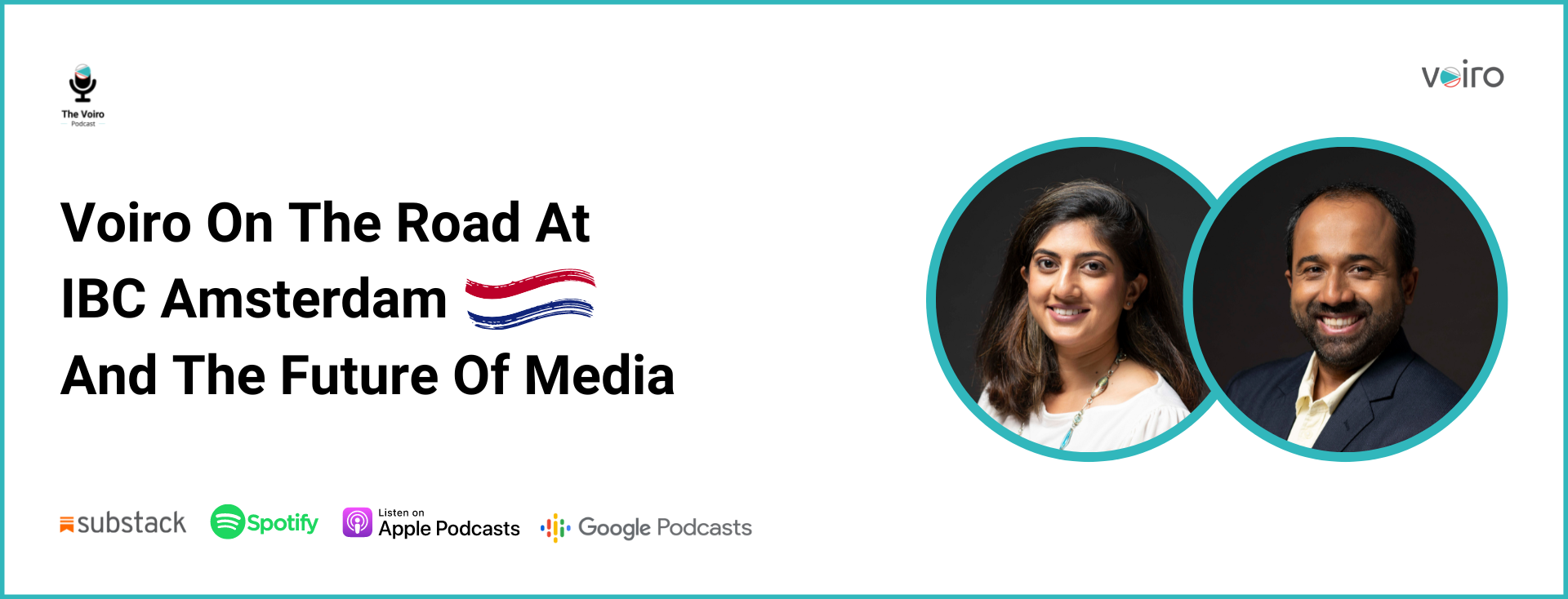
Also listen to this entire episode on:
🎧 Apple Podcast: https://apple.co/3Qrwfp6
🎧 Spotify: https://spoti.fi/3QxPQUC
🎧 Google Podcast: https://bit.ly/3RFF3Jy
The grandest ball of all media and tech balls, IBC (International Broadcasting Conventions) 2022, opened its doors to stalwarts and emerging players across broadcast and tech industries in RAI Amsterdam. After a brief hiatus due to the Covid-19 pandemic, IBC 2022 was an event worth waiting for everyone who is anyone in the content, monetisation, distribution and security industries.
Michael Crimp, Chief Executive of IBC, said: “IBC 2022 will be an exciting live event that gives every attendee the chance to gain valuable insights, share expertise and unlock new opportunities. We’ve already seen how the return of live events is reinvigorating the industry and, at IBC2022, we will enable everyone on our show floor to get back to business in the face-to-face way they love.”
IBC, owned by industry organisations IABM, IEEE, IET, Royal Television Society, SCTE and SMPTE, showcased the latest industry innovators and their emerging technologies for multiplatform delivery, over-the-top (OTT) streaming, and content monetisation. IBC 2022 also had Showcase Theatre, where premier technology providers and thought leaders presented projects, technical papers and demos and conducted free masterclasses and panel discussions.
Steve Connolly, Director at IBC, says: “Technology has been forcibly accelerated across the industry over the last two years and exhibitors are keen to demonstrate these advances to customers and prospects they haven’t met in person for three years in some cases,” Connolly adds. “Our return to Amsterdam as a live event is showing that there really is no comparable substitute for face-to-face business engagement on the scale IBC can deliver.”
Anand Gopal and Kavita Shenoy toured the halls and met with various industry and thought leaders at the conference. Following is a snapshot of all that happened at the mega media tech conference and where the future of media and tech is headed.
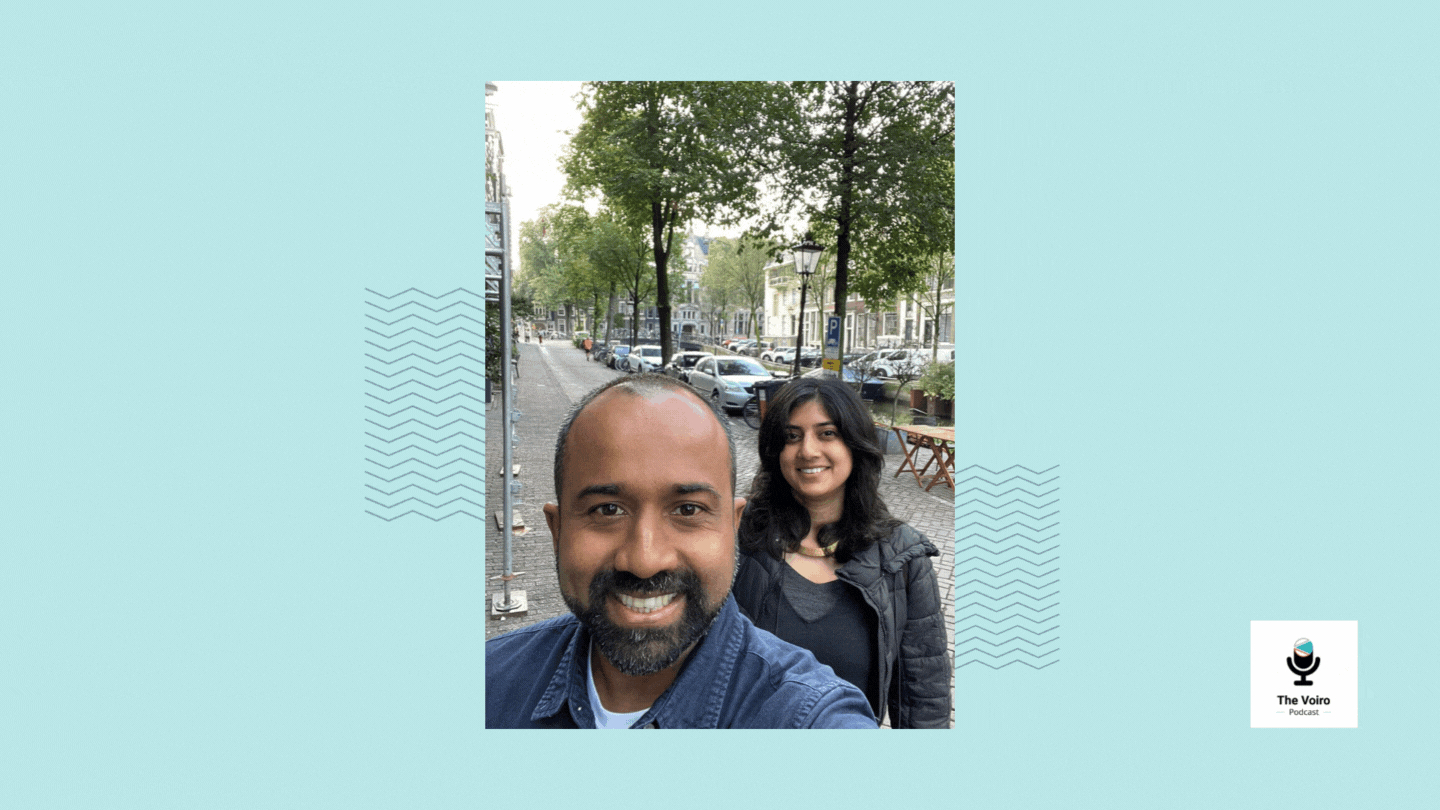
This time at IBC2022, multiple value chains were in focus, some of which were very close to Voiro’s line of work. They were:
Production, broadcasting and distribution of content
Playout and equipment to record and stream content
Monetisation and how to engage and sell better
What was great about the display at IBC2022 was that the vision of the product innovators and distributors was futuristic. There was a significant focus on security, the future of linear TV and FAST, and immersive content creation like virtual effects and augmented reality.
Google had a massive exhibit at IBC2022 and the setup looked like a Google Office, complete with a cafe. Amazon’s exhibit had two floors. Both Amazon and Google talked about scaling the technology on the cloud, which is something that the industry is still turning the corner on.
In the niche tech segment, Hitomi from the UK had a very interesting piece of technology on display. This technology reads the audio lags during live streaming of events and edits the live feed to ensure that the video and audio are in sync. This technology can be used for any event that uses multiple cameras, feeds, or audio sources. In large events like Formula One, or the Oscars, you can have more than 200 cameras and about 140 sources of audio. Hitomi has tech that can read audio, use data to figure out the lag, and then edit the feed to 100 milliseconds, 200 milliseconds, or 300 milliseconds. When we watch an event live, we take for granted that everything will be in sync. But there are people and technology behind every piece of content being produced.
And therein lies the beauty of IBC. It brought to life every part of the value chain on the conference floors.
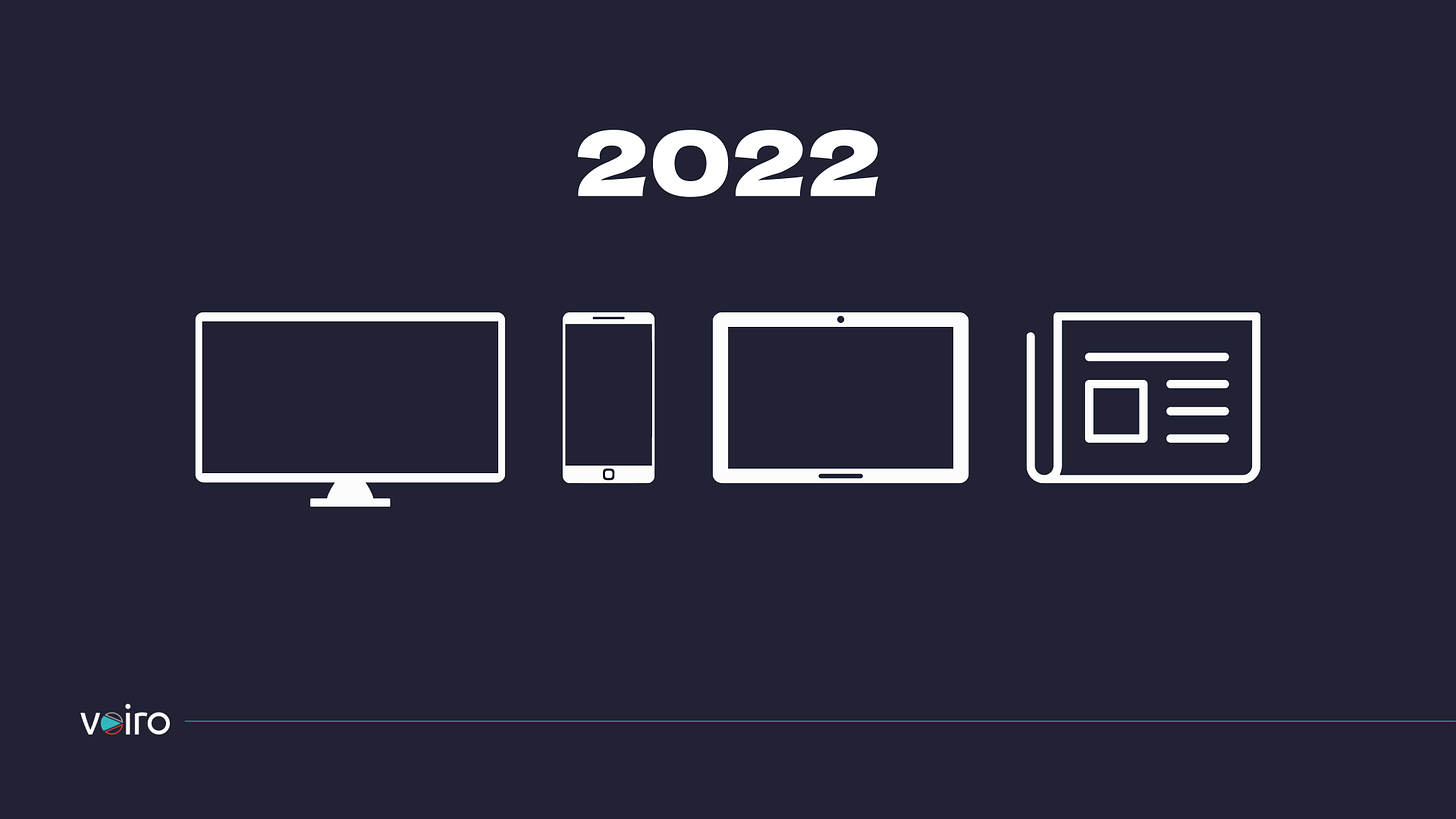
Rich Greenfield, Partner & TMT Analyst LightShed and a long-time expert, writer and commentator on the world of media, talked about the 11 things that have come out of the summer of 2022. Rich talks about a few topics like the collapse of linear TV from a number standpoint, the need for hybrid models, and Comcast’s next move, with streaming providers merging content and apps to increase and retain their subscriber base.
The Voiro View
Disney and Netflix have made a few price-related moves to their ad-supported models to retain subscribers. Many companies have gone back to sequential leases and not dropped seasons in one chart so that people stay on for at least two or three more months for those shows.
This ties into a session at IBC with Marie Fenner and Andy Isaacs from UKTV and Piano, where they talked about using data to drive decisions. Marie gave an interesting talk on what it meant to be data-driven. What kind of decisions are you allowing data to help you with instead of making editorial decisions on content, product, user experience, and marketing revenue?
Andy, the head of analytics at UKTV, went into great depth about how his sole purpose in life is to maximise retention and let everything else follow. Revenue will follow the ability to be nimble, but losing retention can put a spanner in everything else you’re doing. We’ve observed that there’s always a dissonance between the head of data and an ad sales team because the ad sales team requires a different type of data. Andy talked about a system at UKTV in which they have outsourced brand advertising, which makes it easy for everybody else. There is no tussle and the sole focus is on what matters the most: the retention of customers and ensuring that the decision-makers can drive data decisions for content in itself.
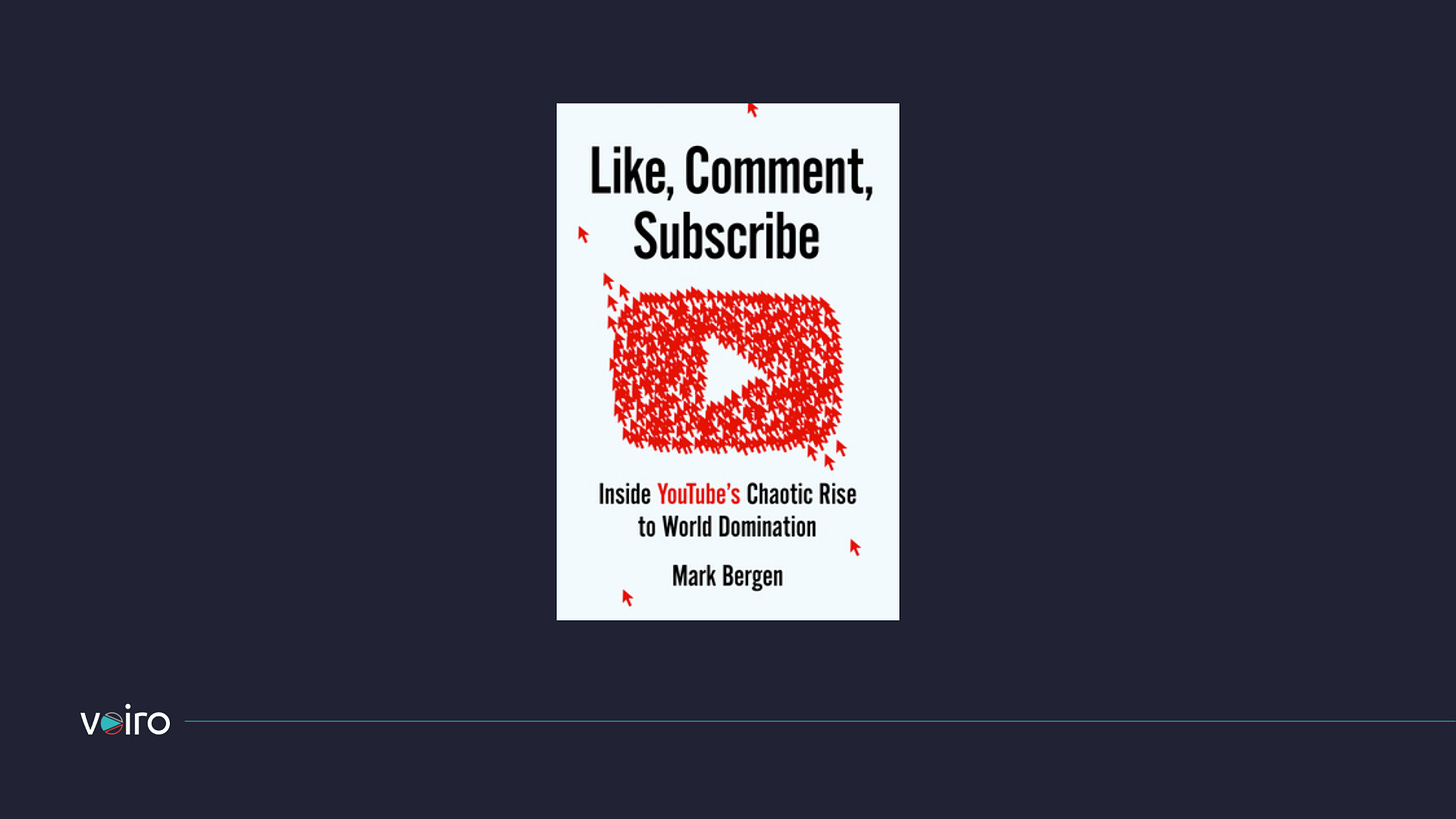
Like, Comment, Subscribe: by Mark Bergen is a book that details the entire history of YouTube and how it changed our perspective on media, culture, industry, and more.
The Voiro View
The latest episode on Recode Media’s podcast talks about YouTube and Peter Kafka interviews Mark Bergen, who’s written a book called Like, Comment, Subscribe. YouTube’s size and speed are still staggering and consumers are still giving them a lot of their attention. Despite TikTok or Instagram, YouTube still comes up on top when it concerns the creator’s economy. This book offers an interesting insight into the Tube’s history and what makes it such a great success story in terms of technology and content.
Amagi Co-Founder and CEO Baskar Subramanian believes cloud set-ups could easily replace live studios in the next year. Speaking to IBC Daily, Subramanian said, “The journey for cloud transformation … started about two, three years ago… now full-blown transformation is happening. I think this is a pivotal moment for the whole industry. Streaming is part of everybody’s business plan,” he said.
© 2024 Voiro. All rights reserved
